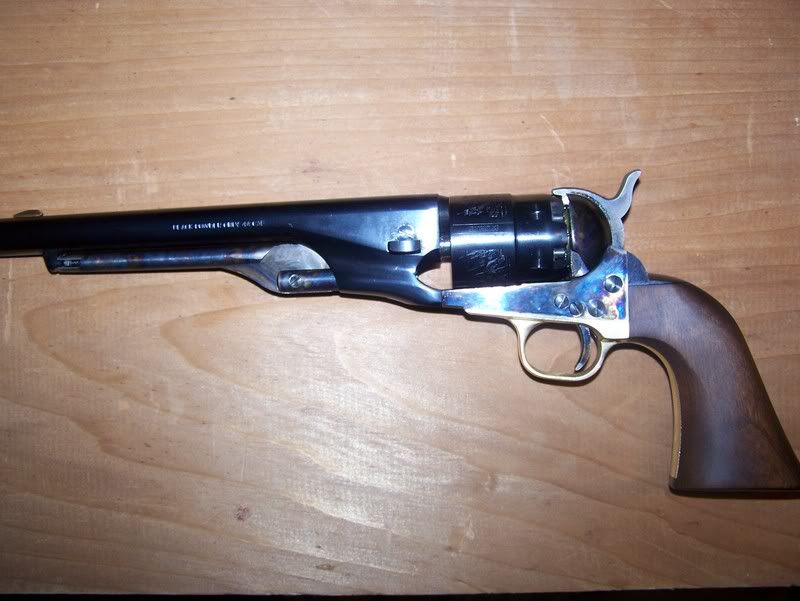The Army 1860 weighing two pounds 11 ounces was production end of a three year search for lighter weight arms for the Dragoons and Cavalry. Originally in 1847-50, the huge .44 caliber Colt Dragoon models were issued for the use of mounted men. But four pounds is heavy for a pistol and the Dragoon revolvers never achieved the popularity of the 2 1/2 pound Navy M1851, though the latter was much lighter in caliber, being only a .36. To reduce weight was always an object.
The Navy frame from the .36 belt pistol was selected for improvement. Using a cylinder of enlarged front diameter, and a tapered inner chamber, it was possible to fit a .44 cylinder to a .36 frame. The fluted "rebated" cylinder first appeared on a model Navy pistol, the barrel of which had been pieced up by silver solder�ing lumps at the breech, to permit moving the barrel a little forward along a longer cylinder pin, and give adequate clearance for the .44 bullet loading cut. A Navy hinged rammer was fitted, the .44 cal. 7 ½ inch barrel being rounded, somewhat resembling the Dragoon barrel. This first experimental pistol proved a .44 was practical with rebated cylinder. Next, a small-guard Navy frame was taken, and cut for the fluted rebated cylinder. The barrel, partly machined, had been further pieced up with silver-soldered inserts to permit shaping a dirt shroud over the loading lever plunger. The lever, to give a "patent" claim to the arms (for Colt's other patents had just expired), was the Root-patent creeping lever ramrod. The shroud about the lever plunger had a dual purpose: it kept dirt from getting in to jam the plunger, and it also could be tightened up by hitting with a mallet, to tighten the sideplay of the plunger, in factory fitting. It also was a streamlined, esthetic style point, highly distinctive and giving a "new look" to the old Navy frame.
William B. Edwards, Civil War Guns, p. 317





